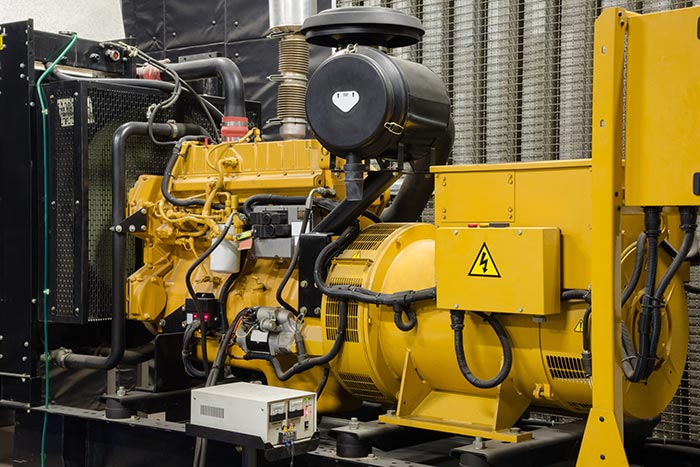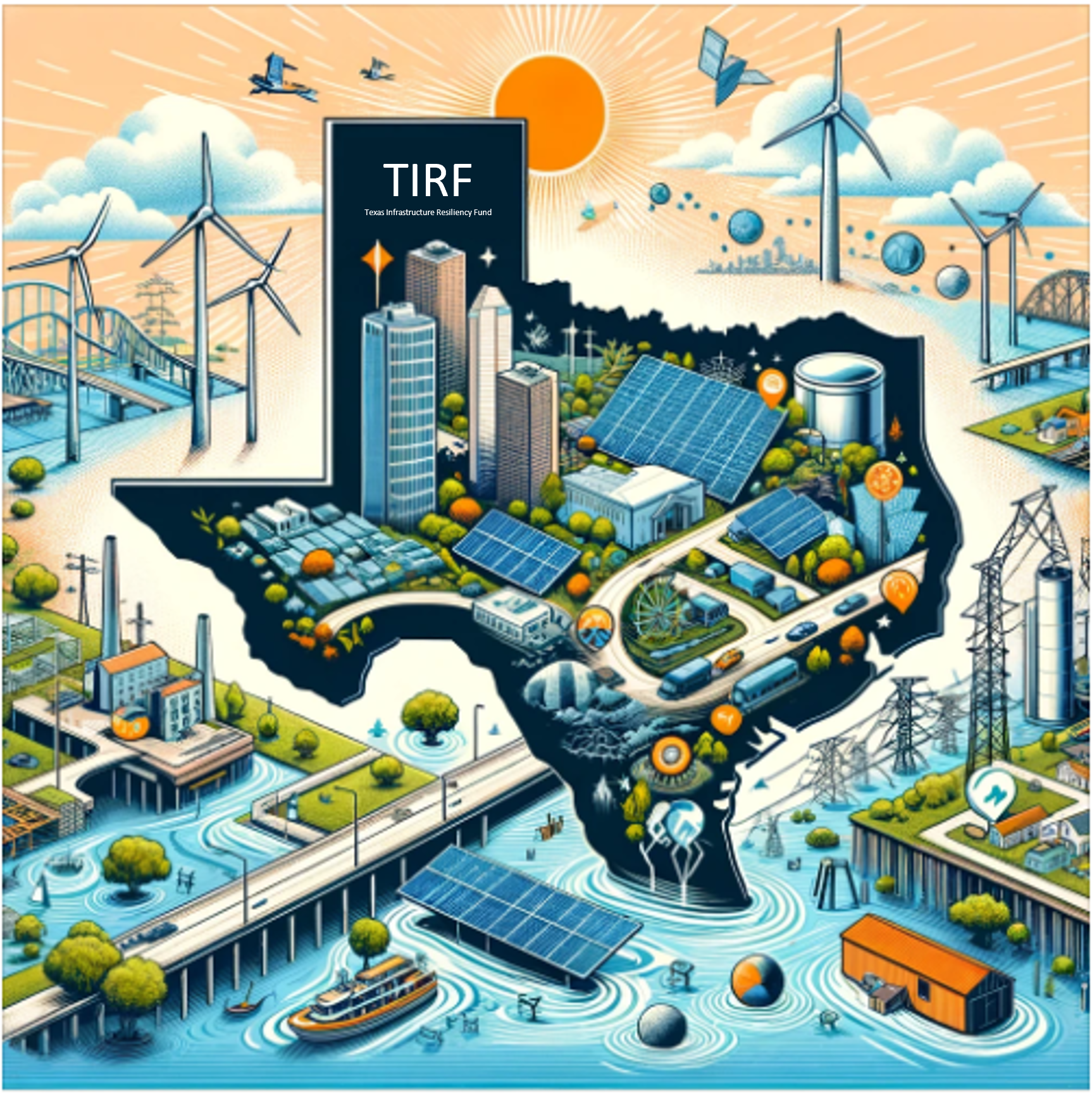Cogeneration or Backup Generation – Which Is Right for Your Facility?

While diesel-based backup generation may be the traditional solution for meeting resiliency regulations, natural gas-fueled microgrids can offer facilities a more comprehensive resiliency strategy that includes cost savings, lower emissions, and other key benefits.
Utility outages can cause highly adverse effects for all types of commercial and industrial facilities, potentially resulting in severe financial losses, damaged equipment, and far-reaching community impacts, particularly in the case of hospitals. With an increasingly unreliable grid and rising weather-related outages, any comprehensive resiliency plan requires some form of on-site power generation.
Traditionally, many facilities have opted for diesel-based backup generators, which can offer quick-starting power for life safety equipment like fire alarms and exit lighting or can be sized to cover additional loads during outages while pulling from the grid the rest of the time. These systems can require significant upfront capital investment and ongoing costs.
Today, facilities can choose a more comprehensive energy solution that not only helps achieve the intended resiliency goals, but actually offers cost savings and other benefits. Cogeneration, or combined heat and power (CHP) systems, can support critical or full loads for even lengthy outages. They run continuously, which means they offer benefits that conventional backup does not: they can offset thermal loads, reduce emissions, and often pay for themselves over time.
To choose the right solution for a facility, it’s worth understanding the function and typical use of both technologies, as well as key factors, like cost-effectiveness, emissions, and system longevity, that may be relevant to the decision.
How the Technologies Work — and When to Use Them
Conventional diesel-fueled backup generation can be essential for life safety support and sized for temporary support of larger loads, while CHP systems run continuously to offer cost savings and can enter island mode during outages to support facility operations indefinitely.
Conventional Backup Generation
A conventional backup generator, also known as an emergency generator, typically uses diesel to produce electricity at about 30% efficiency. Backup power is required to get up and running at full output power within 10 seconds, according to NFPA 70 National Electrical Code (NEC) guidelines and California hospital OSHPD guidelines. Because they can typically start-up in seven seconds, backup generators are a requirement for supporting life safety devices like fire pumps, fire alarms, emergency lighting, exit lighting, smoke evacuation fans, and elevators. They can also be sized to support larger facility loads as needed.
In some cases, backup generation is all that a facility may need. However, these generators are built to provide power for only relatively short durations. They require fuel deliveries if a power outage continues, which can be difficult depending on weather conditions. In addition, because they are run infrequently, they are not built to ensure efficient energy consumption or low emissions. Nonetheless, if the facility needs only life safety support, or the overall load doesn’t warrant a CHP system, conventional backup may be sufficient.
Combined Heat and Power Generation
A CHP or cogeneration system typically uses natural gas generators to create electricity. But instead of wasting the heat from the exhaust or cooling circuits like backup generators, CHP can capture the waste heat and use it to offset a facility’s thermal loads, such as providing hot water or steam for heating applications. CHP units operate continuously, which allows the facility to reduce its utility usage. They have an efficiency of at least 60-80%, more than twice a utility power plant.
A CHP microgrid provides resilient energy during grid outages by activating its island mode capabilities. Typically, a CHP system is interconnected with the utility and operates in parallel to it, but when the utility fails, the system moves into island mode, separating from the grid to provide power to the facility and creating a microgrid, or an independent power grid under local control, that supports either critical loads or all loads, by design. Because a CHP system runs off of natural gas, no fuel deliveries or forethought are required.
While facilities may have backup generation in place to power life safety equipment during emergencies, it is difficult to size backup generators to cover an entire facility. A CHP microgrid can be designed to provide both electric and thermal resiliency for the site as a whole. One important differentiator from diesel-fueled backups is that a CHP system is not suitable as a standby life safety generator, because it is not designed to start up within 10 seconds. By executing a pre-defined sequence of operations, a CHP-based microgrid can enter island mode instantaneously during a utility outage but initially will only power a small portion of the facility’s electric loads. These will be the most critical, non-life-safety loads. Over 15-30 minutes the CHP will ramp up to full power as it incrementally adds the site’s loads to its generator. Once a CHP is running in island mode it can run all equipment, including the life safety load, and stay operational for as long as natural gas is available in the pipeline.
How Cogeneration and Backup Compare Across Key Factors
When comparing cogeneration and backup, factors like cost savings, fuel costs, emissions, resiliency, and system life expectancy may play into the final decision.
As outlined above, there are certain scenarios when using backup or CHP makes sense. But there’s more to the decision. When considering natural gas-fueled CHP systems vs. diesel-powered backup generators, it’s important to take into account the following factors.
Cost Saving
Using cogeneration for baseload power, and for backup power when needed, can pay for itself because purchasing natural gas for on-site generation is nearly always cheaper than purchasing energy from the grid. This is especially true for sites with large electrical or thermal loads, or those in areas with high utility costs. CHP clients tend to see 10-20% savings starting in their first year.
In addition, with an energy services agreement (ESA), the facility is not responsible for the costs associated with purchasing and maintaining the system — they pay the provider for usage alone. Natural gas units above 150 kW typically cost 60-100% more than comparable diesel units, leading to 30-60% project cost increases, but with an ESA, these capital and operational costs are eliminated and no longer a barrier to implementation.
Purchasing diesel-based backup generation requires a large upfront, sunk cost as well as ongoing operating costs. There are no cost savings because it doesn’t run on a continuous basis. In addition, backup generation systems may be cheaper to maintain over the life of the system, as they run very few hours — but this isn’t necessarily a critical point of comparison, as with an ESA the maintenance costs of a CHP system fall on the provider, not the facility. With diesel backup, service contracts for maintenance can range from $20-$100k per year.
Fuel Costs
Per thermal unit, fuel costs are lower for natural gas than diesel. Diesel costs between $20-30/MMBtu, while natural gas costs just $2-4/MMBtu. With just 26 hours of no-load testing per year, a 1 MW unit will consume about 546 gallons of diesel and rack up a large bill. As an added cost, diesel fuel must sometimes be discarded, as it has to be tested annually, according to NFPA 110 8.3.8, to ensure it has not gelled from the cold or grown microorganisms that could plug up filters.

Emissions
Because cogeneration systems operate continuously, reduce grid usage, and support thermal loads, they can lead to significant carbon reductions of 30-40% for facilities, especially those with large thermal loads. Compared with diesel, natural gas generators release much less SOx, NOx, and carbon dioxide. Diesel generators can also release a pungent smell and often require a Title V Air Permit for operation.
Resiliency During Outages
Natural gas is supplied directly to the site’s generator from a pipeline, which allows it to run indefinitely in most scenarios. The National Renewable Energy Laboratory found that in the U.S., natural gas backup generators are on average 2.6% more reliable than diesel.
According to regulations like OSHPD, sites that use diesel backup for life safety may be required to keep a 24-72 hour supply of the fuel on-site. However, once the supply runs out, the site would then require diesel delivery, which may be difficult to ensure due to widespread demand or bad weather conditions.
System Life Expectancy
Cogeneration systems are built and maintained to last for decades — ESA terms commonly stretch 15- 20 years. Because these systems run continuously, proactive maintenance is critical but undoubtedly helps prolong their lifespan. Backup generators can be expected to last for about 10,000-30,000 hours of service, so they could theoretically last for years, depending on whether they are run for just the minimum of 26 hours a year or for hundreds of hours of outages. However, they require excellent preventative maintenance to achieve this lifespan, which typically falls on the facility to oversee.
The Cost of Doing Nothing
To find the right on-site generation solution for a specific facility, it makes sense to take time and weigh the above factors. However, the risks of going without resilient power are real: a 2006 study found that industrial sites average losses between $68,000 and $395,000 over four-hour outages. Grocery stores can lose millions of dollars in spoiled products within hours. Public safety power shutoffs in 2019 may have cost the California economy upwards of $2 billion dollars, with countless businesses feeling the impact.
For some facilities, diesel-based backup generation may be enough to ensure minimum resiliency for life safety equipment and temporary support for some larger loads. However, signing an ESA for a CHP-based microgrid goes beyond minimum support and can actually allow for cost savings and more comprehensive operational resiliency, while reducing a facility’s current emissions relative to the utility.
Unison Energy owns, operates, and maintains cogeneration systems through energy services agreements, ensuring your facility enjoys cost savings and other key benefits. Click here to contact a Unison Energy sales representative.
Energy insights, delivered
Subscribe for more content.
